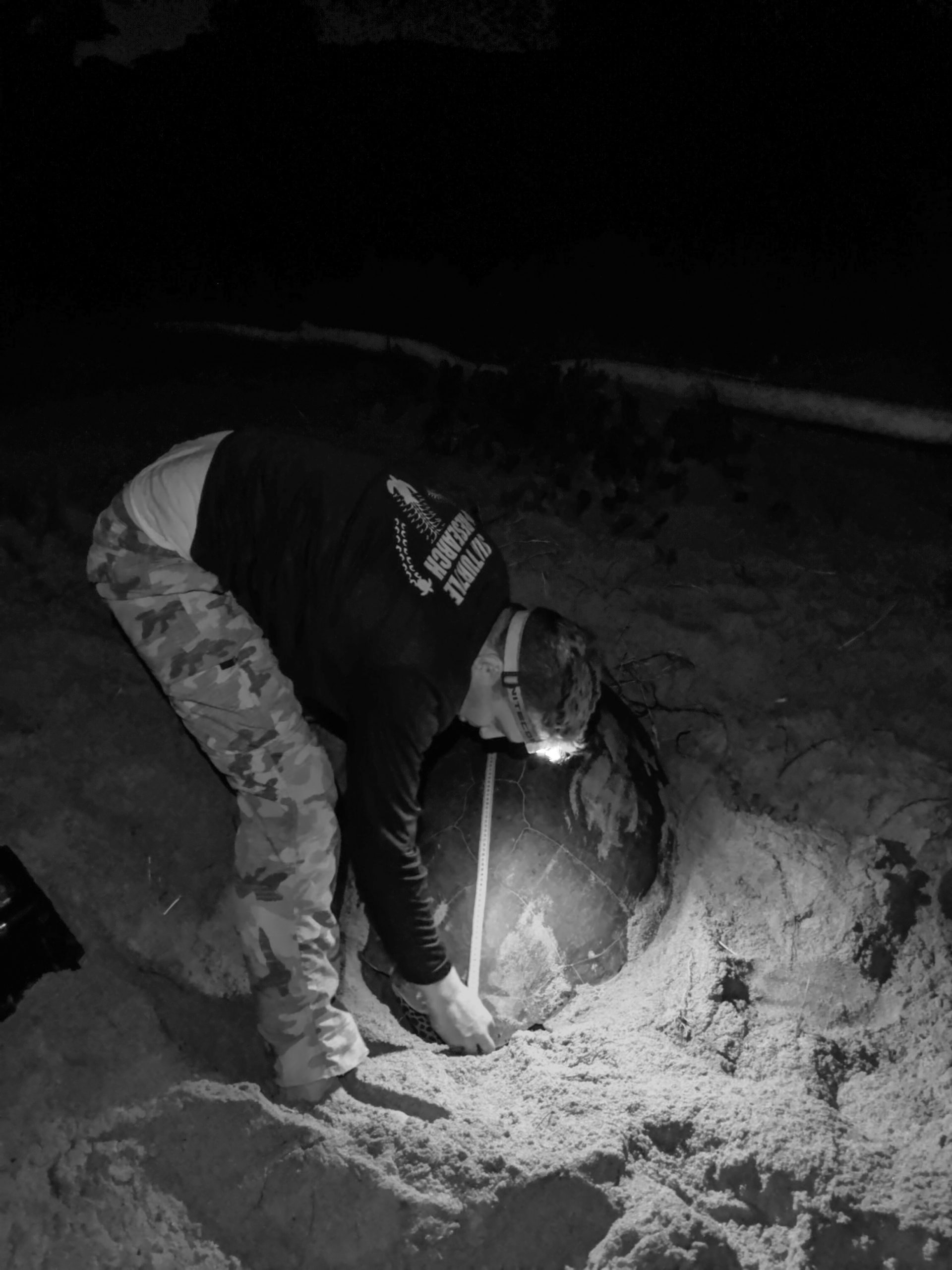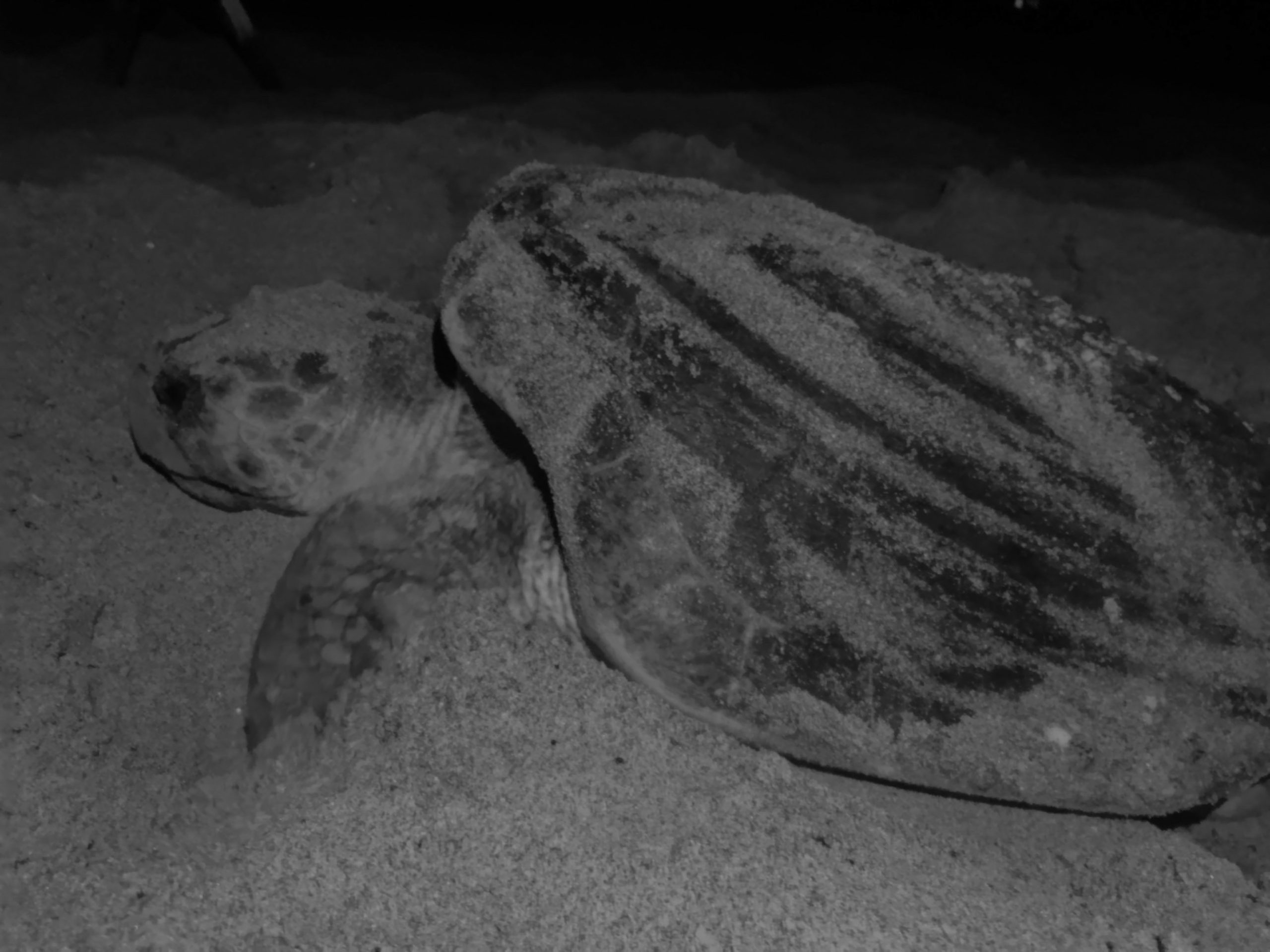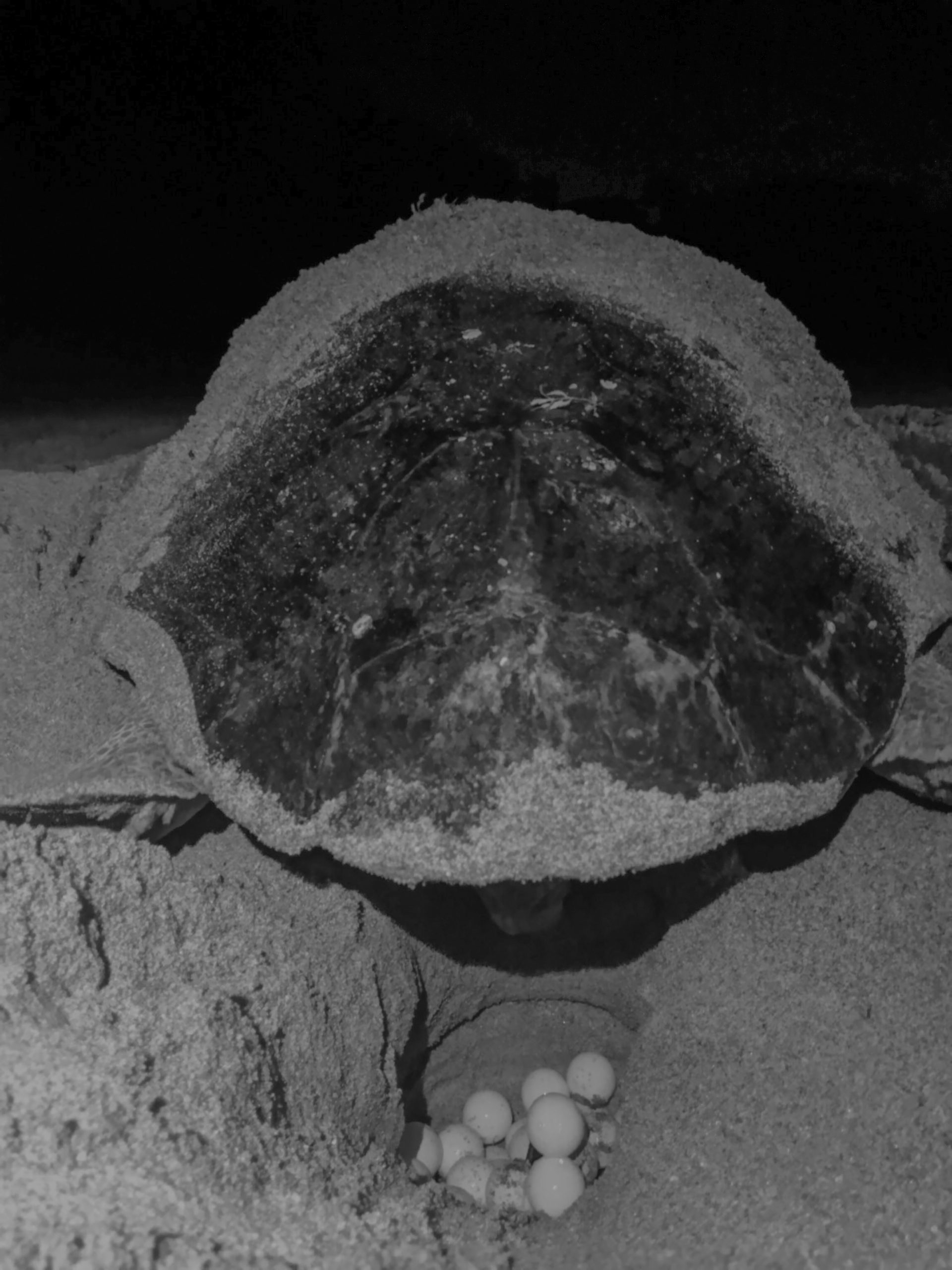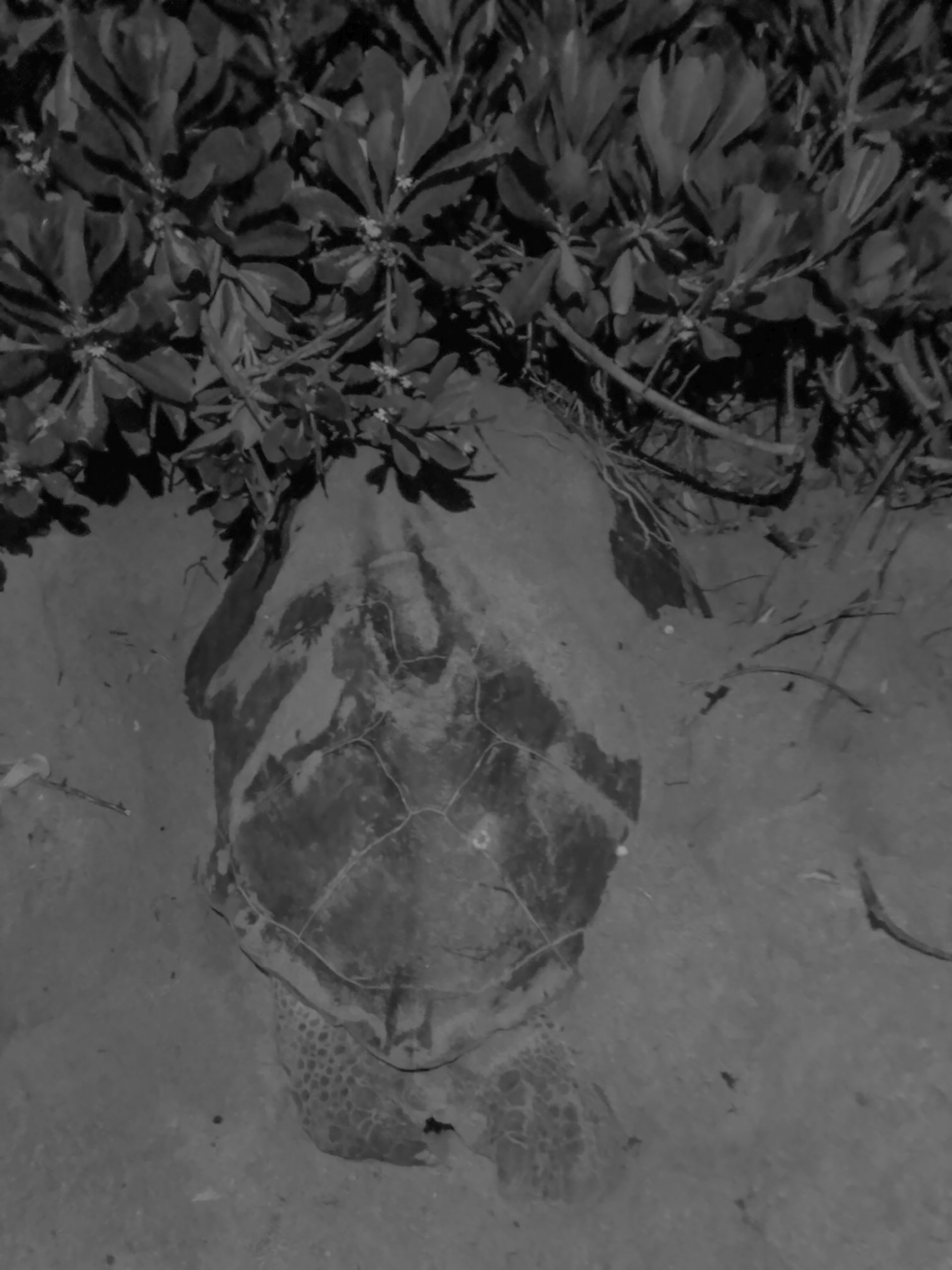Green and loggerhead turtles continue to nest in full force for the night crew’s 5th week of field work. We have officially surpassed 16,000 total nests that span our Juno, Jupiter-Carlin, and Tequesta beaches!!! Loggerheads stand at 11,894 nests, greens have laid 4,553 nests, and we even had another leatherback nest on Jupiter-Carlin this week, bringing their total to 185. Overall we have recorded 16,632 nests across our 9.5 mile stretch of South Florida beaches.

With the nesting season for loggerheads and greens reaching its peak, we will look at the differences in their nesting tendencies that distinguish them from each other!
For loggerheads, they are usually efficient when they do nest (about 40% of the time). They emerge from the sea and crawl straight up the beach, laying and covering her clutch, then returns straight to the ocean. This process normally takes about between 1 and 1.5 hours. By contrast, greens can take up to 3 hours because they are much slower with their nesting stages, dig a extremely large/deep body pit, and throw much more sand to disguise their nests compared to loggerheads.


Loggerheads will typically dig a shallow egg chamber, measuring 15-18 inches from top to bottom. And while the turtle lays her clutch, she will have both rear flippers outside her egg chamber, and they will contract as she drops eggs into the chamber. For greens, their chambers can be around 30-35 inches deep, and can even be as deep as leatherbacks!! They will also drop one of their rear flippers into her chamber, similar to leatherbacks, while she dispenses eggs into the sand.


And that does it for this week. Thanks for reading, and we will have another exciting update next week!
Disclaimer: All marine turtle images taken in Florida were obtained with the approval of the U.S. Fish & Wildlife Service (USFWS) and the Florida Fish & Wildlife Conservation Commission (FWC) under conditions not harmful to this or other turtles. Images were acquired while conducting authorized research activities pursuant to FWC MTP-19-205.
